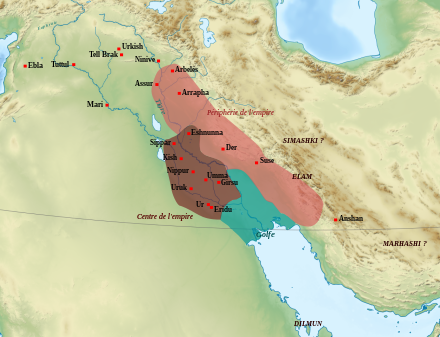Wars of the City States of Sumer and Akkad
ennatum, king of Lagash led his men to a war against Umma
WAR BETWEEN LAGASH AND UMMA
city of lagash
city of Kish
city of Nippur

city of Ur
When the historical narrative begins Akkad included the cities of Babylon, Cutha, Kish, Akkad, and Sippar, and north of Babylonia proper is Semitic Opis. Among the cities of Sumer were Eridu, Ur, Lagash, Larsa, Erech, Shuruppak, and probably Nippur, which was situated on the "border". On the north Assyria was yet "in the making", and shrouded in obscurity. A vague but vast area above Hit on the Euphrates, and extending to the Syrian coast, was known as the "land of the Amorites". The fish-shaped Babylonian valley lying between the rivers, where walled towns were surrounded by green fields and numerous canals flashed in the sunshine, was bounded on the west by the bleak wastes of the Arabian desert, where during the dry season "the rocks branded the body" and occasional sandstorms swept in blinding folds towards the "plain of Shinar" (Sumer) like demon hosts who sought to destroy the world. To the east the skyline was fretted by the Persian Highlands, and amidst the southern mountains dwelt the fierce Elamites, the hereditary enemies of the Sumerians, although a people apparently of the same origin. Like the Nubians and the Libyans, who kept watchful eyes on Egypt, the Elamites seemed ever to be hovering on the eastern frontier of Sumeria, longing for an opportunity to raid and plunder.
Lagash made the argument that the borders were already set in place and Enlil was in favor of them retaining control over Guedena, our attractive fertile field. Umma saw things differently. A mediator, therefore, was needed to settle the dispute. That mediator would be none other than Mesalim, king of Kish,

ENNATUM

Eannatum was the King of Lagash, a fertile town nestled between the Tigris and the Euphrates. While his domain was prosperous, Eannatum wanted more.
This ambitious king, upon receiving his power, understood that Lagash’s security relied on its water supply from the Shatt al-Gharraf. Unfortunately his neighbor, the city-state of Umma, also bordered this very important channel on the western bank. The chief cause of hostility between these important cities is unknown according to some historians, and while we can never be certain, it seems obvious to us that the conflict was over water.

city of umma
Umma held this one strategic advantage over Lagash. Cutting the water supply to the city would hinder its domestic produce and trade via waterway, effectively crippling commerce in Lagash and sending prices upward on all commodities.
Knowing all this then, it might not be surprising that conflict between Lagash and Umma was common. We even have primary sources citing the fact. Enmetena, son of Eannatum II and nephew of the famed conqueror Eannatum I, recorded the history of the battles on a large rock known as the “Enmetena Cone.” The engraving describes the first war between the two powers, fighting for possession for the fertile fields of Guedena, located between the two great city-states.
MESALIM , king of Kish
“Enlil, king of all the lands, by his righteous command, for Ningirsu and Shara, demarcated the (border) ground. Mesalim, king of Kish, by the command of Ishtaran, laid the measuring line upon it, and on that place he erected a stele.”
=================================================
=================
http://www.gutenberg.org/files/16653/16653-h/16653-h.htm#id2514776
===========================


No comments:
Post a Comment